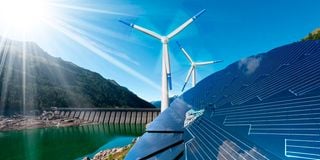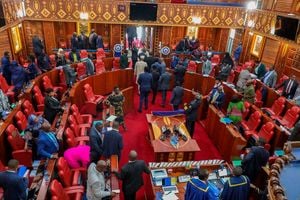Raise threshold for easier licensing of captive plants

A renewable energy plant that generates both wind and solar power.
The commercial and industrial solar sector in Kenya has flourished in the past 10 years, providing solutions for electricity to manufacturers, horticultural and other agricultural companies, tourist lodges, shopping malls and institutions and others.
Businesses and institutions have installed solar PV systems and mini hydro plants in their establishments to guarantee quality of supply and lower the costs of electricity as a component of their production cost. This has seen a rapid expansion of the investment environment with many players choosing to invest in such systems.
Captive power solutions allow the country to expand access to quality electricity while also complementing the supply from Kenya Power and reducing diesel usage. This has largely been boosted by the eased regulatory environment and a supportive regulator that has allowed the development of the sector.
The bulk of these installations have been below 1MW, further encouraged by loosened regulations and mainly a requirement to notify the regulator when such installations are done. For such small installations undertaken mostly by medium-scale industries and establishments, this light regulation has allowed them to manage their power costs and, thus, undertake more profitable business.
The attempt, through the Statute Law (Miscellaneous Amendment) Bill 2023, to amend the Energy Act, 2019 to lower the threshold for more onerous licensing to 500kW from 1MW goes against the desire to see more of these establishments take control of their power quality and costs.
I see two possible reasons for such a move: One, an attempt at stemming defection from the grid and, two, to increase visibility and control of installations for safety reasons at 500kW-1MW systems. Visibility and control for grid-tied installations can be achieved by requiring strict adherence to the notification of installations to the regulator. Compliance is necessary to ensure the safety of internal and external staff working on the grid.
Lowering the threshold will, however, not stem defections from the Kenya Power grid; only improved service quality and lower tariffs can. The country continues to see bigger systems of greater than 5MW being installed by industries in their pursuit of better efficiencies. This is not only motivated by cost and quality but also self-set climate targets.
The scale and scope of the electricity business will expand beyond the national grid in the coming years due to investor interest in setting up large-scale manufacturing and delays in onboarding new generation capacity onto the grid. Kenya must not only be seen to be open to these new prospects but also implement laws and regulations that are alive to where the market is moving.
Indeed, it is counterintuitive to lower rather than raise the threshold for easier licensing, considering the challenges in capacity, pricing and quality to the grid, especially during low rain periods. Kenya requires a flexible and robust environment for power supply, whether self-supply or on the grid. The South African government opened its ‘easily licensed’ segment of the captive market from 1MW to 100MW and finally removed the cap in totality. That was in recognition of the role that captive supply can play in remedying the supply problems in that country. We do not need to wait for a crisis to learn, react and adapt.
At a time when industries face a myriad of challenges to operating in the country, we should not erect new barriers to innovation that they can use to be more viable. Kenyan industry and establishments continue to invest in very costly standby generators, which are estimated to exceed the installed power capacity on the grid.
The generators are said to amount to at least 5GW of capacity, compared to the 3.3GW on the grid. Kenya is the second-largest standby generator market in Sub–Saharan Africa, after Nigeria. That points to a serious problem with the reliability of electricity supply and the willingness of industry and establishments to find alternatives.
As we gear up to having a more clean, reliable supply to power industrial development, we cannot afford to erect additional barriers to medium-sized companies looking to install renewable energy systems in the 500kW-1MW range.
Mr Aluru is the CEO, Electricity Sector Association of Kenya (ESAK). [email protected].





